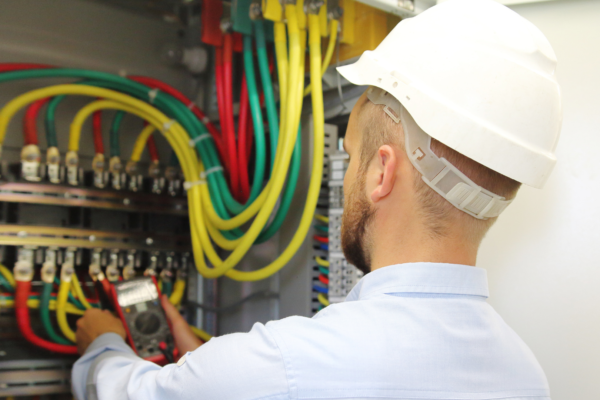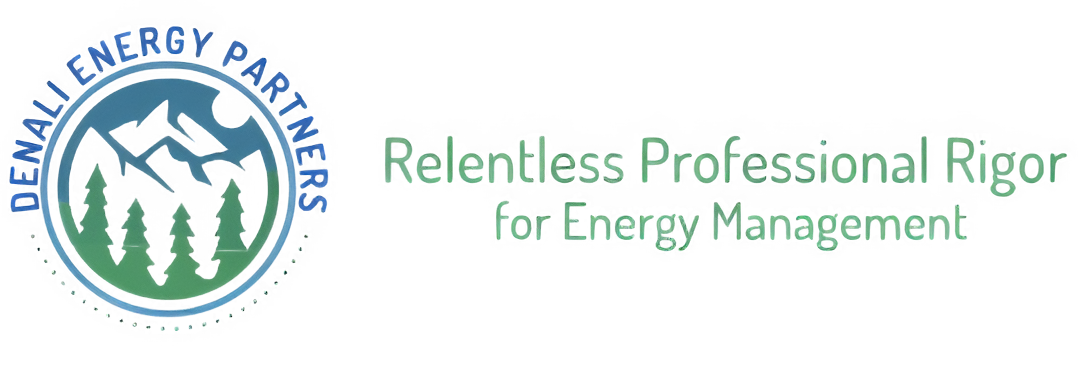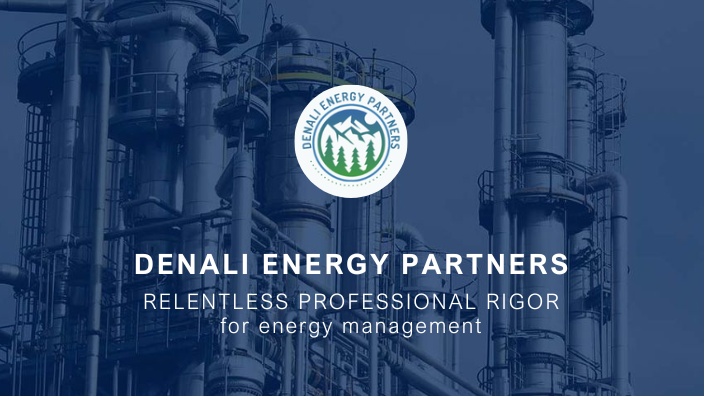Industrial Safety in Industrial Parks | Denali Energy Partners
Denali-ep
| 15 de octubre de 2024
Industrial Safety in Industrial Parks
Industrial safety is a critical component in the operation of any industrial park. It not only protects workers but also ensures the proper functioning of facilities and the continuity of operations. In this article, we will explore the fundamental aspects that should be considered to maintain a safe and efficient environment in industrial parks.
Importance of Industrial Safety
Industrial safety is not just a legal obligation but also a necessity for protecting human lives, material assets, and the environment. A proper focus on safety helps prevent accidents, reduces operational costs, and improves employee morale. A well-implemented safety program can also contribute to a company's reputation and ensure compliance with local and international regulations.
Risk Assessment
Hazard Identification
The first step in ensuring safety within an industrial park is to identify all potential hazards. These include physical, chemical, biological, and ergonomic risks. Hazard identification is conducted through regular inspections, employee feedback, and the analysis of historical incident data.
Risk Analysis
After hazards are identified, a thorough risk analysis should be performed to determine the probability and potential impact of each risk. This allows for the prioritization of corrective and preventive actions, ensuring that the most significant risks are addressed promptly.
Industrial Park Design and Planning
Safe Infrastructure
The infrastructure of an industrial park should be designed with safety in mind. This includes using fire-resistant materials, providing adequate ventilation systems, and ensuring that emergency exits are clearly marked and easily accessible. Proper planning helps minimize the risk of accidents and ensures rapid evacuation if necessary.
Space Layout
The layout of the industrial park should facilitate safe movement and operations. High-risk areas should be isolated, and access routes should be clear and accessible for both employees and emergency personnel. The space should also allow for easy evacuation and reduce the exposure to hazards.
Employee Training and Awareness
Training Programs
Regular training programs are essential to maintain a culture of safety. Employees should be trained on the proper use of personal protective equipment (PPE), emergency procedures, and the safe handling of hazardous materials. Ongoing education ensures that staff are aware of the latest safety protocols and can react appropriately in emergency situations.
Emergency Drills
Periodic emergency drills help prepare employees to respond quickly and effectively in real-life scenarios. These drills also provide an opportunity to evaluate the effectiveness of emergency plans and improve the response capabilities of both individuals and the organization.
Implementation of Regulations and Standards
Compliance with Local and International Standards
Industrial parks must comply with all local and international safety regulations, including building codes, hazardous material handling, and environmental protection laws. Compliance ensures not only the safety of workers but also avoids legal liabilities and potential fines.
Audits and Regular Evaluations
Regular safety audits and evaluations are necessary to ensure ongoing compliance with safety standards. These audits, ideally conducted by third-party experts, provide an objective assessment of the park’s safety measures and highlight areas for improvement.

Monitoring and Control Systems
Technology in Industrial Safety
Advanced technology, such as gas detection sensors, security cameras, and remote monitoring systems, can significantly enhance industrial safety. These technologies allow for the early detection of risks, providing the opportunity for a rapid response before a situation escalates.
Real-Time Monitoring
Real-time monitoring of industrial facilities ensures constant surveillance, enabling immediate detection of incidents. This level of oversight is crucial for preventing accidents and mitigating the consequences when they do occur.
Equipment Maintenance and Inspections
Preventive Maintenance Programs
A well-structured preventive maintenance program is essential to avoid equipment failures and accidents. Regularly scheduled maintenance helps identify potential issues before they pose serious risks, ensuring the continued safe operation of all machinery and infrastructure.
Routine Inspections
Routine inspections of both equipment and facilities ensure that all operations conform to safety standards. These inspections should be carried out by trained professionals following strict protocols, ensuring no critical areas are overlooked.
Waste Management and Hazardous Materials
Proper Waste Disposal
Proper waste management is crucial to maintaining a safe environment. Waste should be classified, stored, and disposed of according to established regulations. This minimizes the risk of contamination and accidents related to improper handling or storage.
Safe Storage of Chemicals
Hazardous chemicals should be stored in designated areas with specific safety measures in place. These include using appropriate containers, ensuring adequate ventilation, and implementing containment systems to prevent spills or leaks.
Emergency Response Plans
Clear Emergency Protocols
Industrial parks must have clear, well-defined emergency response protocols in place. These protocols should cover evacuation procedures, first aid, and communication with emergency services. A well-prepared emergency plan can save lives and limit property damage in case of an incident.
Rapid Response Teams
Having internal emergency response teams, trained and equipped to handle emergencies, can make a significant difference in the outcome of an incident. These teams should be regularly trained and able to respond quickly to fires, chemical spills, or other accidents.
Community Engagement and Communication
Building Relationships with the Community
Maintaining a positive relationship with the surrounding community is essential. Informing local residents about safety protocols and preventive measures in place at the industrial park fosters trust and collaboration, especially during emergencies.
Transparency in Communication
Transparency regarding the risks and safety measures implemented within the industrial park is vital. Regular reports on risk management efforts and emergency drills help build trust with the public and ensure preparedness for unforeseen events.
Continuous Improvement and Evaluation
Performance Indicators
Using key performance indicators (KPIs) to measure the effectiveness of safety measures is critical for continuous improvement. These indicators can include incident rates, emergency response times, and compliance with safety regulations.
Implementing Improvements
Continuous improvement is a fundamental aspect of industrial safety. Lessons learned from incidents, audits, and evaluations should be used to implement enhancements to the safety protocols, ensuring the industrial park’s safety measures remain effective and up to date.
Benefits of a Safe Industrial Environment
Reduced Accidents
A safe industrial environment significantly reduces the likelihood of accidents, protecting both employees and property. This also enhances the park’s reputation as a reliable and responsible operator.
Improved Productivity
Safety contributes to productivity by minimizing disruptions caused by accidents and creating a stable, secure working environment. When employees feel safe, they are more focused and efficient, leading to better overall performance.
Conclusion
Industrial safety in industrial parks is a comprehensive process that demands continuous attention and a proactive approach. From identifying risks to implementing improvements, each step is vital to ensuring a safe environment for workers and smooth operations. By combining safe infrastructure, proper training, regulatory compliance, and the use of advanced technology, industrial parks can create a solid foundation for maintaining industrial safety.
What are the most common hazards in industrial parks?
The most common hazards in industrial parks include physical risks (such as slips, trips, and falls), chemical exposures, fire hazards, machinery malfunctions, and ergonomic issues. Additionally, biological and environmental risks can also be present depending on the type of industries operating within the park.
How often should safety audits be conducted in an industrial park?
Safety audits should be conducted at least annually, but the frequency may vary depending on the size of the park, the complexity of its operations, and local regulatory requirements. High-risk areas may require more frequent audits to ensure continuous compliance and identify potential hazards early.
What role does employee training play in industrial safety?
Employee training is crucial in promoting industrial safety. Proper training ensures that workers are aware of safety procedures, how to use personal protective equipment (PPE), and how to respond to emergencies. Regular safety training and refresher courses help maintain a culture of safety awareness and preparedness.
How can technology improve safety in industrial parks?
Technology enhances safety by providing real-time monitoring, early detection of risks, and automated responses to certain hazards. Examples include gas detection sensors, surveillance cameras, fire suppression systems, and remote monitoring tools that enable quick responses to emergencies, minimizing risks.
What steps can industrial parks take to comply with safety regulations?
To comply with safety regulations, industrial parks should conduct regular risk assessments, implement safety protocols based on local and international standards, provide employee training, perform routine maintenance and inspections, and ensure all safety equipment is up to code. Regular audits by third-party organizations can also help verify compliance and identify areas for improvement.




